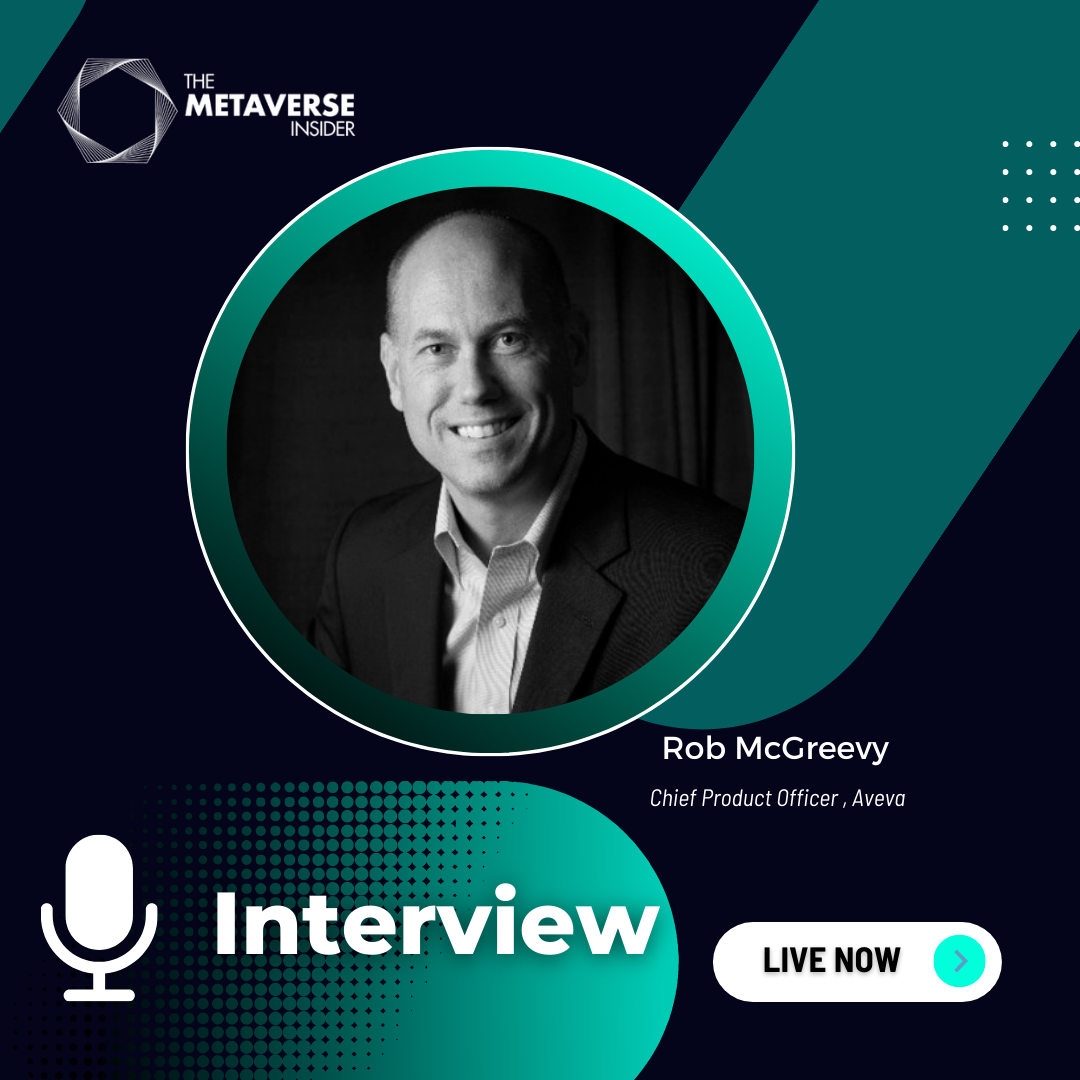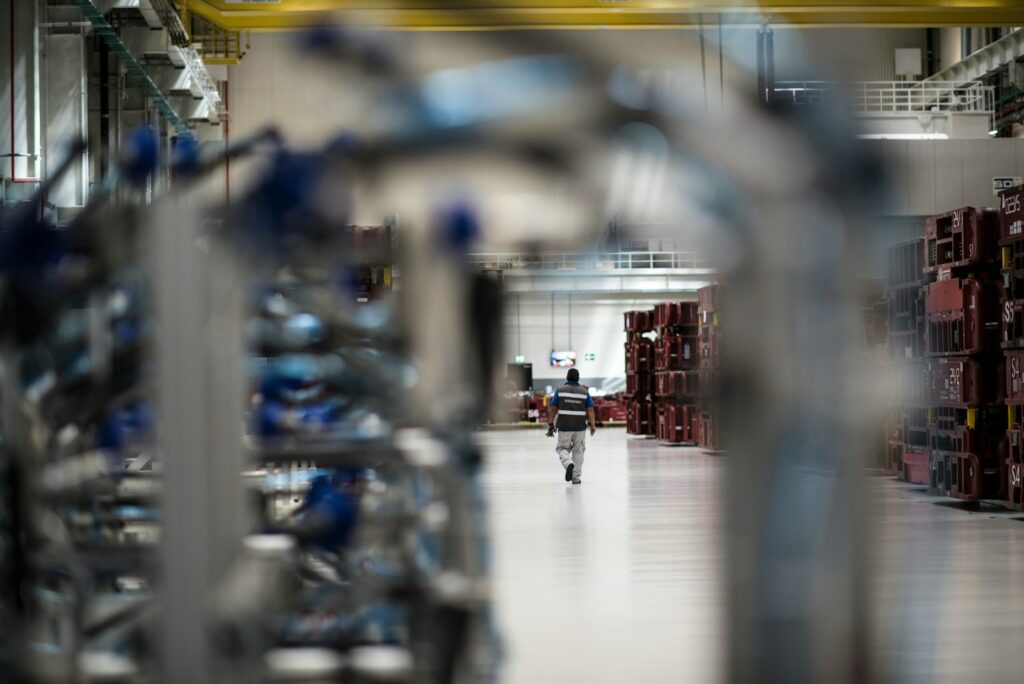Aveva is a leading provider of engineering and industrial software solutions. They offer innovative technologies to optimize operations and improve efficiency for businesses worldwide – and one of their recent advancements is the industrial metaverse.
The Metaverse Insider had the pleasure of interviewing Rob McGreevy. As the Chief Product Officer for Aveva, McGreevy has almost 30 years of experience in the industrial manufacturing and critical infrastructure market, dedicating his career to software development in this field. As the Chief Product Officer, McGreevy’s responsibility is to determine the investment direction for Aveva. He focuses on understanding the evolving market landscape and aligning it with Aveva’s research and development efforts to develop and deliver software solutions that cater to the needs of various industries. McGreevy’s role involves keeping a close eye on industry trends and market demands to ensure Aveva remains at the forefront of technology innovation in the markets they serve.
What is Aveva Currently Working On?
In Aveva’s exploration of the industrial metaverse, they have focused on several key elements. The development of this concept has been ongoing for around 20 to 30 years, but in the past 12 years, Aveva has made significant progress. The foundation of the industrial metaverse lies in the concept of a digital twin, which encompasses various industrial data across the entire lifecycle of design, construction, operation, and maintenance. This includes high-fidelity process production data such as temperatures, flow rates, and pressures, as well as the defining characteristics of critical assets like equipment, conveyors, boilers, and offshore oil rigs.
Aveva recognizes the convergence of diverse data types, including engineering data, operational data, and even time-based data, which collectively contribute to the anatomy of the metaverse. The development of digital twins has been a major focus for Aveva, with most of their customers actively participating in this aspect:
“We’ve been spending a lot of time and energy on the development of digital twins, which form the foundational elements of the Metaverse.”
“We see a convergence of data that are required to inform and become the anatomy of the metaverse, including engineering data, operational data, and time-based data.”
Another aspect of the industrial metaverse that Aveva has considered is the behavioral dimension. This involves understanding the actions and behaviors within industrial manufacturing and infrastructure. It encompasses the models and behavioral aspects of digital twins, incorporating verbs and action items related to activities such as production scheduling, product changeovers, and the overall production process.
The third element Aveva emphasizes is the visual experience of the metaverse. They recognize that people are drawn to the visual aspect and provide various means of experiencing it. This includes augmented reality on tablets and handheld devices for in-field environments, large panoramic displays resembling physical control rooms, and immersive virtual reality headsets primarily used for training purposes. Aveva has been deploying these technologies for over a decade, enabling users to engage with the metaverse through different devices and interfaces.
These three key elements—digital twins as the foundational data, the behavioral aspects tied to industrial actions, and the visual experience—comprise Aveva’s vision of the industrial metaverse. They have been actively working with customers and partners across diverse industries to develop and implement this concept, unlocking new use cases such as remote collaboration, where field workers and experts can connect within the same digital space. Aveva’s engagement in the customer and market realms has been multidimensional and promising, with exciting possibilities emerging from their exploration of the industrial metaverse.
Who is Aveva Working in Collaboration With?
Aveva collaborates with major hyper-scale technology providers such as Microsoft and Amazon for both data infrastructure and visualization tools. They leverage critical infrastructure on Azure and utilize visual rendering tools for client-side 3D rendering. Additionally, Aveva works with a variety of partners to federate different systems within the digital twin and metaverse concept. These partners include analytics and AI providers, work processing and ticketing system vendors, and mobile operators. Aveva acknowledges that the metaverse involves integrating multiple systems and data sources, and they actively engage with tech partners to complement their offerings:
“We collaborate with automation and controls vendors like Siemens, Rockwell, and Honeywell, who contribute to the data model and sensing capabilities in the industrial Metaverse.”
Aveva’s partner ecosystem encompasses both major technology players and specialized tech companies that provide extensions and plugins for their platforms. They also work closely with automation and control vendors to incorporate sensing capabilities into the industrial metaverse. This collaboration with a diverse set of partners and vendors enhances Aveva’s ability to deliver comprehensive solutions within the industrial metaverse framework.
What Industries are Leading the Charge?
In terms of fully immersive environments, McGreevy states that the heavy process industries such as oil and gas and chemicals have made significant advancements. These industries require training operators and personnel on complex tasks for safety and reliability reasons. One example is the use of fully immersive operator training systems (OTs) that simulate chemical and refining processes. This technology allows individuals to wear headsets, put on gloves, and learn how to handle various situations like extinguishing fires or operating valves. The heavy process industries were early adopters of this technology due to the high stakes involved and their ability to afford such configurations:
“The decreasing cost and increasing necessity of deploying this technology have made it more accessible.”
“Changes in workforce dynamics and the need for efficient operations drive the adoption of immersive technology.”
Another area where immersive technology has found traction is in the renewable energy sector, which deals with highly distributed assets like solar arrays and wind farms. This necessitates the use of digital technologies in the field to provide augmented reality and in-situ instructions to remote field workers. These instructions help connect the distributed workforce to central expertise, enabling efficient operations and maintenance. The energy sector, including renewables, has taken advantage of this technology to enhance field operations.
The third emerging area for immersive technology adoption is in industries that have a large number of distributed plants, such as food and beverage (foodbev) and fast-moving consumer goods (CPG). Companies with multiple plants located near large populations face challenges related to workforce needs, including transient workers and an aging workforce. To address these challenges, they are digitizing tribal knowledge and providing in-situ instructions through tablets and phones. Complex machine setups are being digitized, allowing operators to access digitized instructions and data while performing tasks in the field. This integration of data, instructions, and user experience aligns with the concept of a digital twin, where physical assets are operated on while leveraging sensing data and behavioral instructions.
Overall, heavy process industries were early adopters of immersive technology, followed by the energy sector and distributed industries like foodbev and CPG. The decreasing cost and increasing necessity of deploying this technology have made it more accessible across various industries, driven by changes in the workforce dynamics and the need for efficient operations.

















